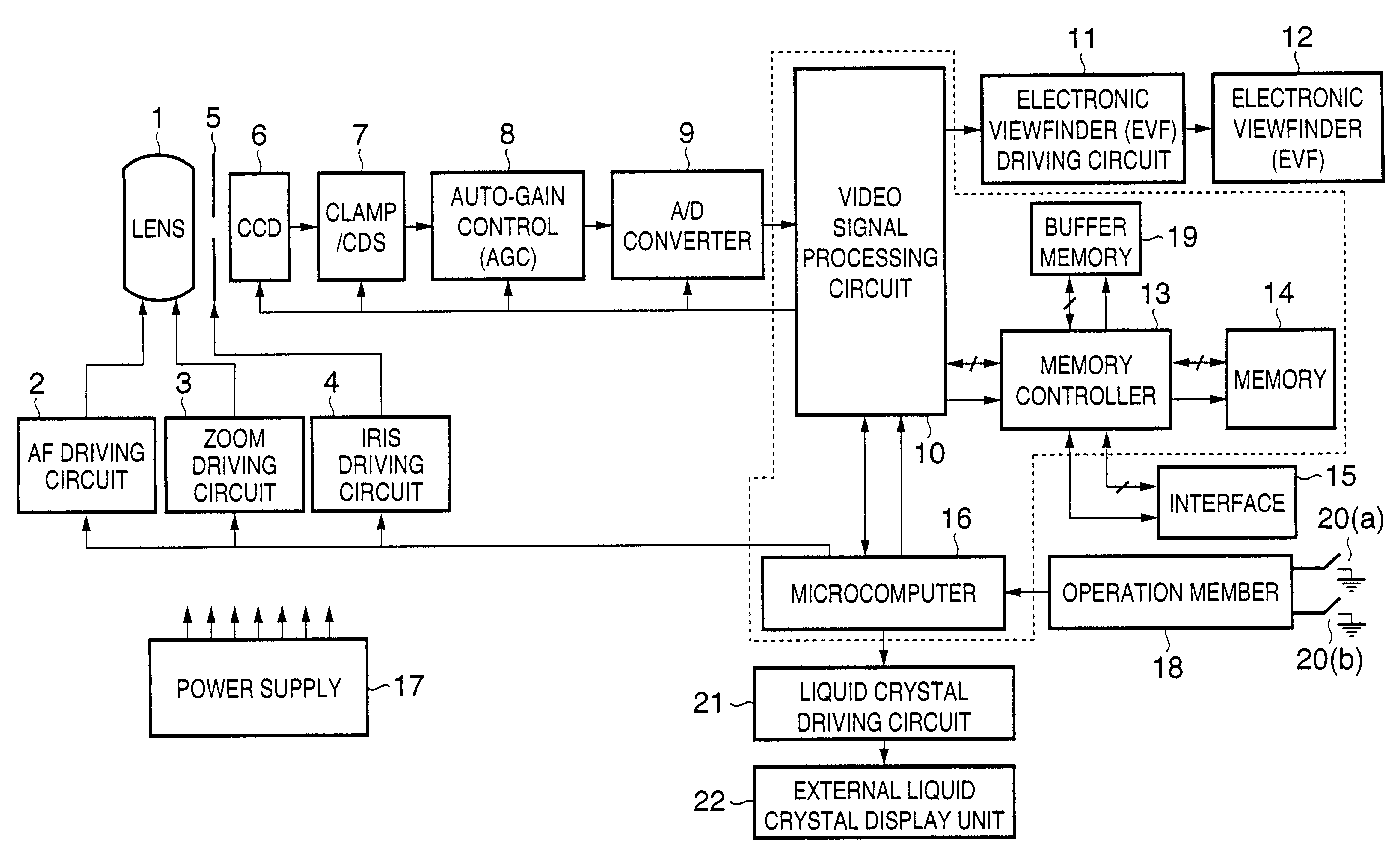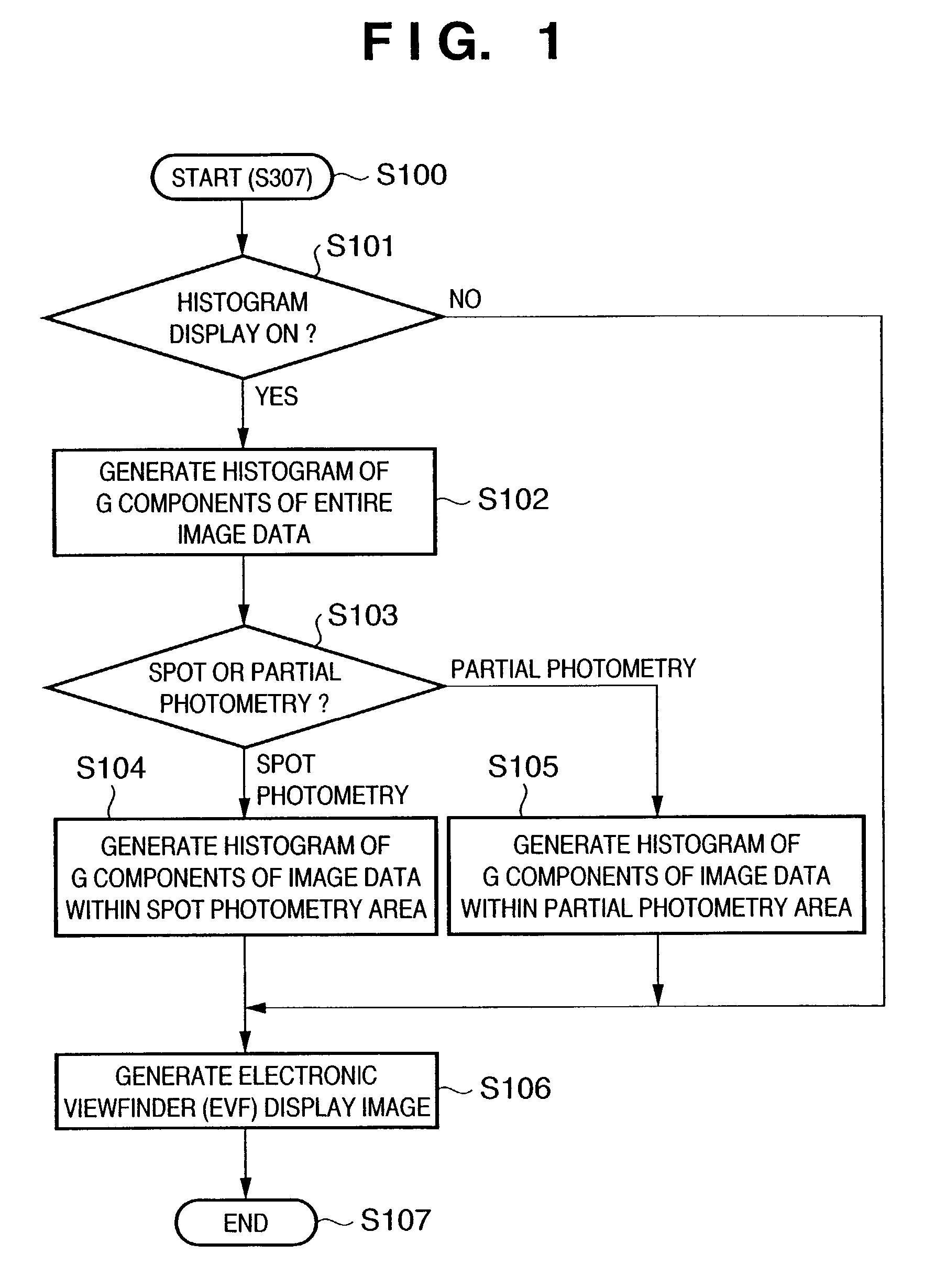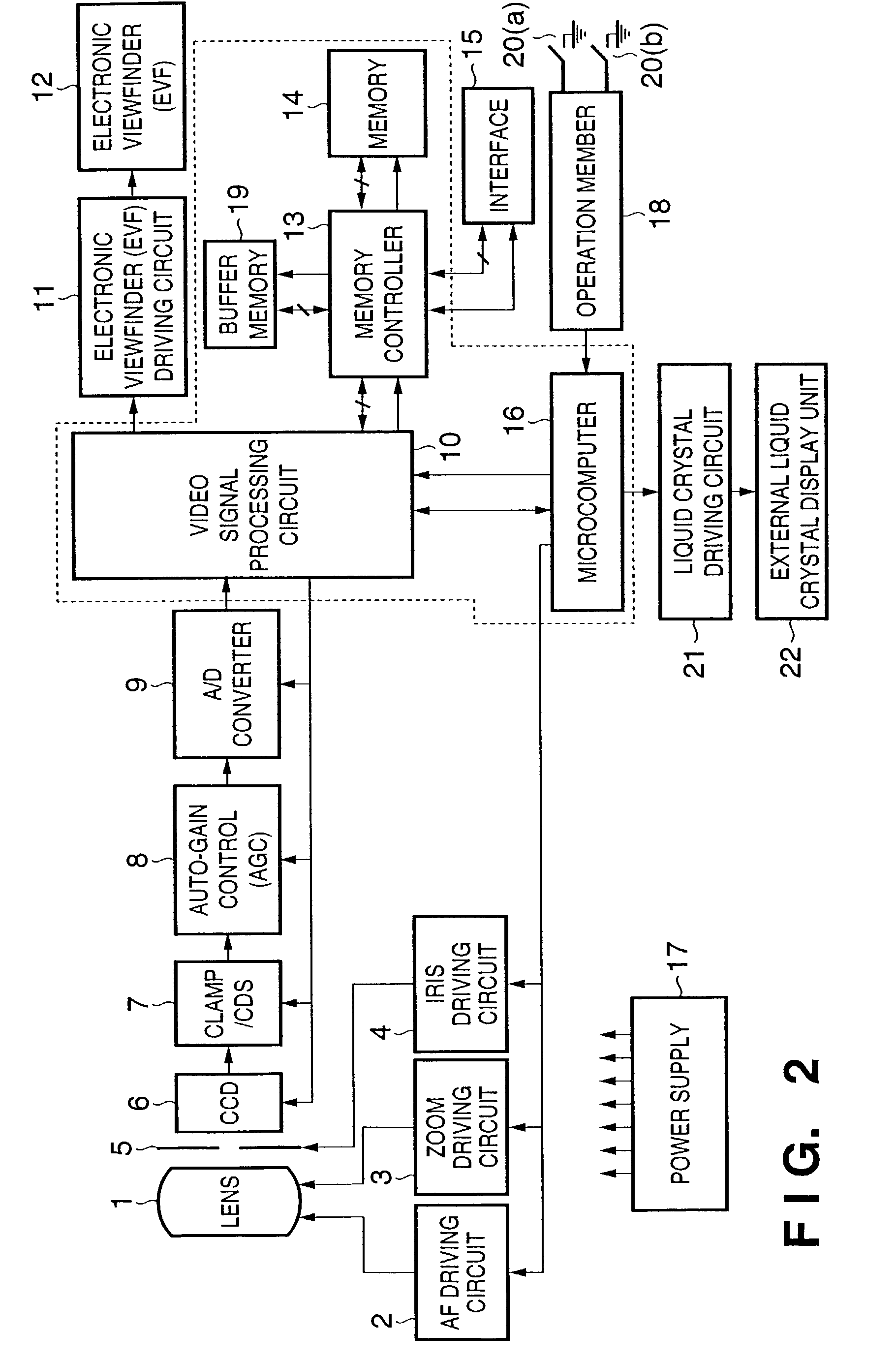Image sensing apparatus for calculating a histogram of image data and its control method
- Summary
- Abstract
- Description
- Claims
- Application Information
AI Technical Summary
Benefits of technology
Problems solved by technology
Method used
Image
Examples
first embodiment
[0068]A characteristic feature of the first embodiment will be described below using the flow chart shown in FIG. 1.
[0069]The process shown in the flow chart in FIG. 1 is included in step S307 in FIG. 3.
[0070]In the following description, a method of displaying histograms on the electronic viewfinder using G components of the entire range of the image sensing frame of image data, and a partial range selected from the entire image sensing range of image data will be exemplified. However, the process to be described below is not limited to G components, and may use R or B components or luminance signal.
[0071]The process starts in step S100.
[0072]It is checked in step S101 based on the operation member 18 if the histogram display mode is ON or OFF. If the histogram display mode is OFF, the flow jumps to step S106 to display an image alone.
[0073]If it is determined in step S101 based on the operation member 18 that the histogram display mode is ON, the flow advances to step S102 to calc...
second embodiment
[0088]On the other hand, in the second embodiment to be described below, an image sensing apparatus which can calculate the histogram of image data corresponding to a given photometry range when the selected photometry mode is other than the partial or spot photometry mode, i.e., an average or split photometry mode, and the photometry area is broad or indefinite, and can identifiably superimpose both the histograms of the entire image sensing range of image data, and a partial range selected from the entire image sensing range, and its image sensing method will be explained.
[0089][Arrangement of Image Sensing Apparatus: FIG. 2]
[0090]Note that the arrangement of the image sensing apparatus that mounts an image processing apparatus of the second embodiment is the same as that of the first embodiment, which has been explained using FIG. 2. Therefore, since the block diagram that shows the arrangement of an image sensing apparatus which mounts an image processing apparatus of the second...
third embodiment
[0109]On the other hand, in the third embodiment to be described below, the selected photometry mode corresponds to a selected range within an in-focus ranging point mark (e.g., a point determined to have a highest contrast or the nearest distance from a plurality of specific areas) controlled by, e.g., the AF driving circuit 2, video signal processing circuit 10, and microcomputer 16.
[0110]In case of the third embodiment, an image sensing apparatus which can calculate the histogram of image data corresponding to the selected range within the in-focus ranging point mark, and can identifiably superimpose it on the histogram of the entire image data, and its image sensing method will be explained.
[0111][Arrangement of Image Sensing Apparatus: FIG. 2]
[0112]Note that the arrangement of the image sensing apparatus that mounts an image processing apparatus of the third embodiment is the same as that of the first embodiment, which has been explained using FIG. 2. Therefore, since the block...
PUM
 Login to View More
Login to View More Abstract
Description
Claims
Application Information
 Login to View More
Login to View More - R&D
- Intellectual Property
- Life Sciences
- Materials
- Tech Scout
- Unparalleled Data Quality
- Higher Quality Content
- 60% Fewer Hallucinations
Browse by: Latest US Patents, China's latest patents, Technical Efficacy Thesaurus, Application Domain, Technology Topic, Popular Technical Reports.
© 2025 PatSnap. All rights reserved.Legal|Privacy policy|Modern Slavery Act Transparency Statement|Sitemap|About US| Contact US: help@patsnap.com



